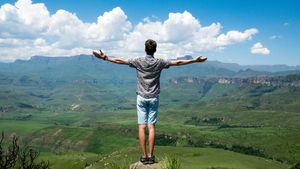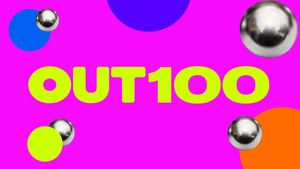A Rainbow in the Oasis
I waxed my sandboard, tucked my feet into the bindings, leaned back, and began shooting down a 400-foot dune in Valley of Death. The Salt Mountain Range protected me from the sand-churning afternoon winds of the mystical Atacama Desert beyond.
The air was so dry it felt my skin was flaking like a lizard's, but the sun beating down was pleasantly cool thanks to the 8,000-foot altitude. I fell down into the soft sand in a heap, and gazed up at the monster dune I would need to trudge up again, like a mountain of mocha-colored quick sand. The altitude would make me feel like a 70 year-old smoker as I climbed up it, but I was beginning to love this gloriously low-tech sport that reminded me of sliding down hills on cardboard boxes as a kid. No wonder it's at the top of the list for travelers coming to the Atacama, who are all looking for high outdoor adventure.
Although it is more than a two-hour flight north from Santiago, the red Mars-like terrain of the Atacama still feels like a continuation of the same country. The active volcanoes of the Andes continue to loom to the east (one dramatically popped off in 1993), although they are less snow-laddened here. The Atacama is said to be the driest sand desert on Earth -- some spots here have never recorded a drop of rainfall. Scientists come to the Atacama to test out space equipment and to study the sterile sections of the desert, which have no traces of life.
As I walked the dusty streets of the adobe town of San Pedro, I strolled past dogs lounging in the sandy lanes and Atacame?o Indians leaning against stucco walls, their shadows elongated in the stark sunshine. The tiny oasis of San Pedro acts as the tourist center of the region. It was established by trailblazing backpackers and is now quickly attracting the well-heeled to its new upscale lodges (Cameron Diaz and Drew Barrymore both recently traveled here). But it's not a town that's asleep: Black flags dot the buildings' roofs, in protest to a planned hydroelectric plant that could drain the nearby tourist-popular Taito Geysers of their water, and probably divert more water to the region's open-pit mines, some of the world's largest. If it weren't for the Atacama's huge deposits of copper, Chile would be a much poorer place.
Out of the corner of my eye, I instinctively spotted a rainbow flag dangling above the entrance of one of San Pedro's tiny shops. Having been to Peru, I knew of the rainbow-colored Incan flag used by indigenous peoples of the Andes. But this shop's flag looked like it had come straight out of the Castro. I wandered into the miniscule boutique, where hand-woven alpaca-wool blankets and small abstract paintings lined the mud walls. A young man smiled from behind the register, and I slowly learned he was from Ecuador, had opened up this shop ten months ago, and was in love with San Pedro.
"But that is not an Andean flag, but a gay flag, yes?" I prodded in my mediocre Spanish.
"Yes," he smiled again. "I have never had any problems being gay here. The people in town are very nice."
Indeed, we are everywhere.
Although at first glance the Atacama looked monotonous, its intricacies slowly reveal themselves. I spent days exploring high-altitude plains filled with the remnants of salt lakes, where the dainty vicuna (a smaller cousin to the llama) came to drink while the strange viscacha (looking like a cross between a rabbit and a squirrel) hopped by. Wading pink flamingos popped brightly against the beige background. Geysers bubbled in day glo pools, and tourists soaked in reed-filled hot springs. I rode a mountain bike through the desolate Valley of the Moon, where more mocha-colored dunes the size of cruise ships collected and elaborately-carved rock canyons stood like cathedrals. Sure, the Atacama looked a lot like the Southwest U.S., but there was an ethereal quality to the empty, haunting place that felt more raw and more virgin than any desert I had been to.
At night, the peculiar constellations of the Southern Hemisphere blasted starlight from above. The Atacama is one of the best places on the planet for stargazing, and home to some of the world's most powerful astronomical telescopes. I tried to make out of the Southern Cross, which seemed to be hidden. No matter, I could still feel the rotation of the night sky above the desert, and the titling of the transforming country of Chile beneath my feet. I got the feeling that no matter what earthquake, volcano, junta, or social revolution the country had been through, it was shifting and transforming in the right way.
Part One | Part Two | Part Three | Part Four











































































